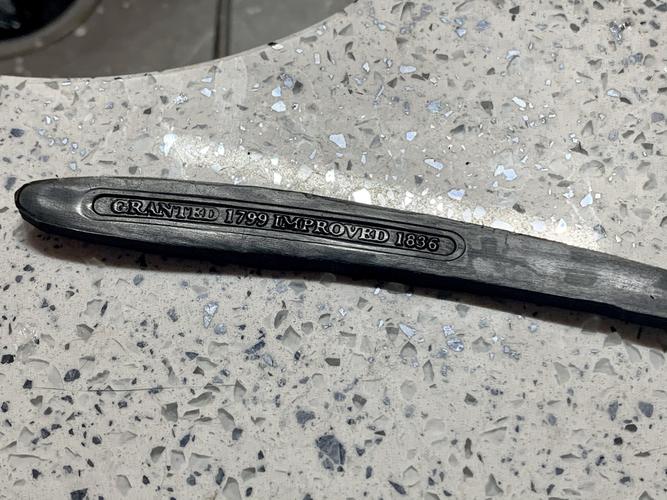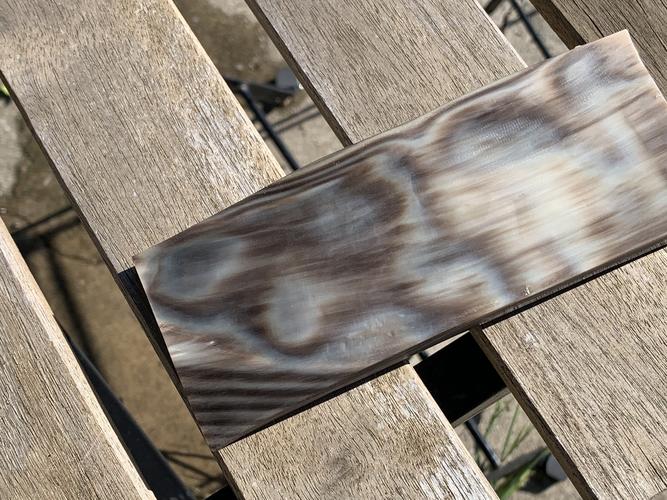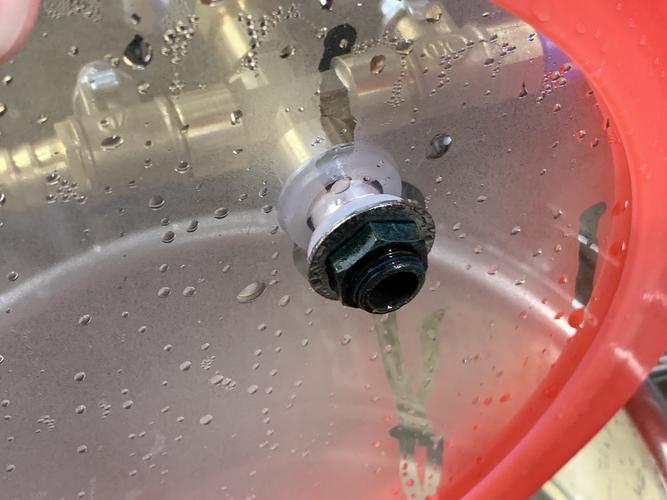Results 1 to 10 of 13
Thread: Making new pressed horn scales.
Threaded View
-
08-04-2021, 08:29 PM #2

The failures... Dear god, the failures.
I should start by saying that while I got usable scales out of the method I used, I don't really consider it a success because of how wildly impractical it is from the standpoint of time alone. I really would not recommend this as a way of making pressed horn scales.
There is a glimmer of hope that a modified version could change everything. The company that makes the resin I used has a new version, Sculpt Ultra, which is considerably tougher both in hardness and heat deflection. It's rated to 220 C (428 Fahrenheit). I strongly suspect it could be used in a much more traditionally Sheffieldy process.
But this is about all the ways I failed.
From the start I knew my resin molds would not be up to the task I wanted them to perform -- namely, high heat and high pressure on the unaltered horn. The preliminary tests I did with the small coin of horn cracked the molds, and cracking the molds would be a common event throughout the whole process. I didn't get the thickness of the mold and the support structure around it dialed in until the very end.
However, I knew that a lot of things had happened in the chemical science of manipulating keratin (which is what horn is made of) since the old Sheffield guys were pressing scales in molds.
Almost all of that chemical science has been in the cosmetics industry. For manipulating hair. Specifically, the permanent press style, or perm.
There are a zillion different ways of doing it with a whole spectrum of awful chemicals, but by the 1950's or so things had settled in to use either a strong base or a mild acid. In casting my net around, I found a group in the Pacific Northwest that had experimented with softening horn among the Tlingit and other groups that've lived there for thousands of years. They soaked the horn in ammonia for weeks.
So that got it soft, but the hair industry had settled largely on using hydrogen peroxide to re-set it. So armed with two easily purchased chemicals, some ziplock bags and a workshop I didn't have to stand around smelling, I set off.
My first test used a small piece of horn, a little too thick for scales, and definitely not long enough, but enough to see how all this worked.
After about 2 weeks in a bag of ammonia, the horn was outright rubbery. So I clamped it into my mold, baked it for 30-45 minutes (I have lost track of the times I used because they really don't appear to be particularly critical) and boom! A very promising result!

The next step was to soak the promising result in a bag of peroxide. I left that in for an hour, but I could feel the horn was still very rubbery, so I left it overnight. It was still rubbery. So I left it for that day. It was still rubbery. So I chalked it up as a failure of the purity of my peroxide and took it out. A day later, the piece was fully hard again.
Too hard.
Fragile, glassy, hard.
I went through a couple more cycles of this until I got this result:

It was clear I needed to modify the mold and figure out a better way of getting the blanks fitted to the mold, but the softening process was working great at this point:
So I made a 2 part version of my mold which had a deeper negative mold and a backing plate that fitted into it with shallow positive features to form the inside of the scales.
And this is when everything went to hell.
For months, I could get no other piece of horn to soften.
After two months in ammonia it had warped, swelled, and changed color. It was not appreciably softer.

After a few days, the color went back to normal, but the swelling and warping did not.
- I tried boiling for hours -- it worked, but didn't make the horn soft enough to press in the molds I had.
- I tried holding the horn in open flame (which is a traditional method) -- but without someone to guide me, the only thing I was going to do was scorch a bunch of horn blanks before finding the right technique.
- I got a vacuum pot and tried soaking the slab in ammonia under vacuum -- it did nothing.
Because of the times involved in those soaks, that represents about 4 months of flailing at this project before I realized what variable had changed.
When I began, I was still running the space heater I mentioned in my first post because the resin I was printing with needs to be about 25C to print properly and even in summer it rarely breaks 60 in my workshop (I love living in Pacifica).
All the failures started happening after I turned off the space heater (because of the power bill).
Heating the ammonia produced solidly better results, but even that wasn't quite enough to make the method workable. Though it had already turned my vacuum pot into a surreptitious dye vat.

This is a brass fitting.
That's when I realized that the thickness of the horn was also important. Much thicker than typical razor scales, and it would never really get soft enough to work with. So I got a handheld planer, made a horribly janky jig to hold the horn, and planed it down to size. That, finally, did the trick.
By this point, I had little enough horn left I wasn't terribly inclined to experiment with the peroxide soaking method to make the horn harden up again, but I knew from all the scraps I had around that time would do that job too, and so I finally settled on what more or less worked. The amount of time it took to harden was excessive.
While cutting the scale shapes out using the press method I described in the first part works, it's very far from ideal. IDEALLY, the mold itself would do that job, just as the old Sheffield ones did. The shape has to be pretty precise to the mold or you get artifacts (which are visible on my final product), and cutting with scissors can't quite be precise enough because the horn isn't uniformly soft. Or at least it wasn't with the last piece I had.
There you have it. The ridiculous saga of making a new pair of pressed horn scales.
You can bet I'll be trying again when I get the new resin, and I can think of a couple of tricks that might get me where I want to go via other methods, but it was well and truly time to get that Greaves back to its proper owner.
Postscript
Opening and looking into a pot of 100F ammonia is exactly as awful as you'd expect.Last edited by Voidmonster; 08-04-2021 at 08:34 PM.
-Zak Jarvis. Writer. Artist. Bon vivant.
-


 38Likes
38Likes LinkBack URL
LinkBack URL About LinkBacks
About LinkBacks







 Reply With Quote
Reply With Quote